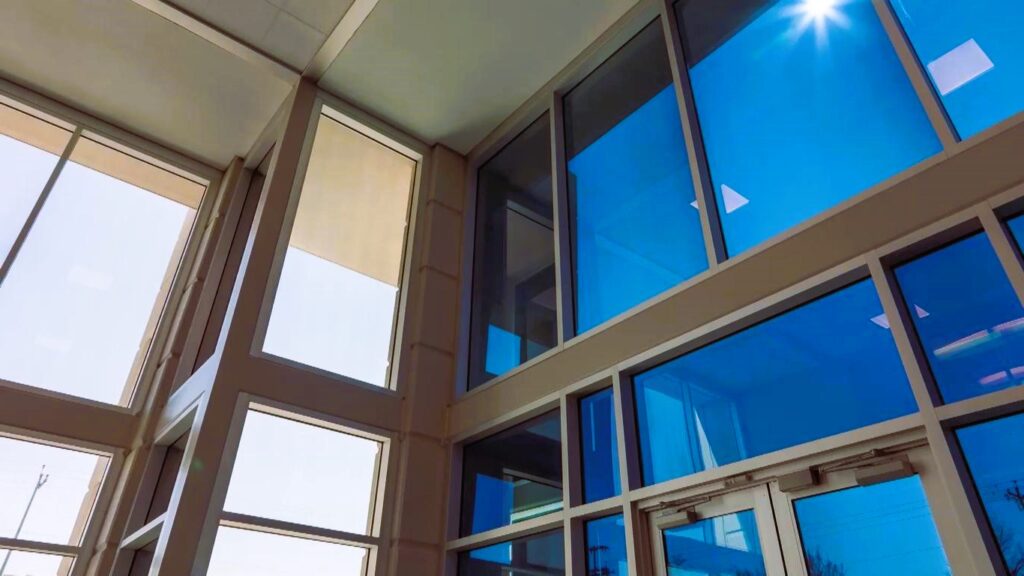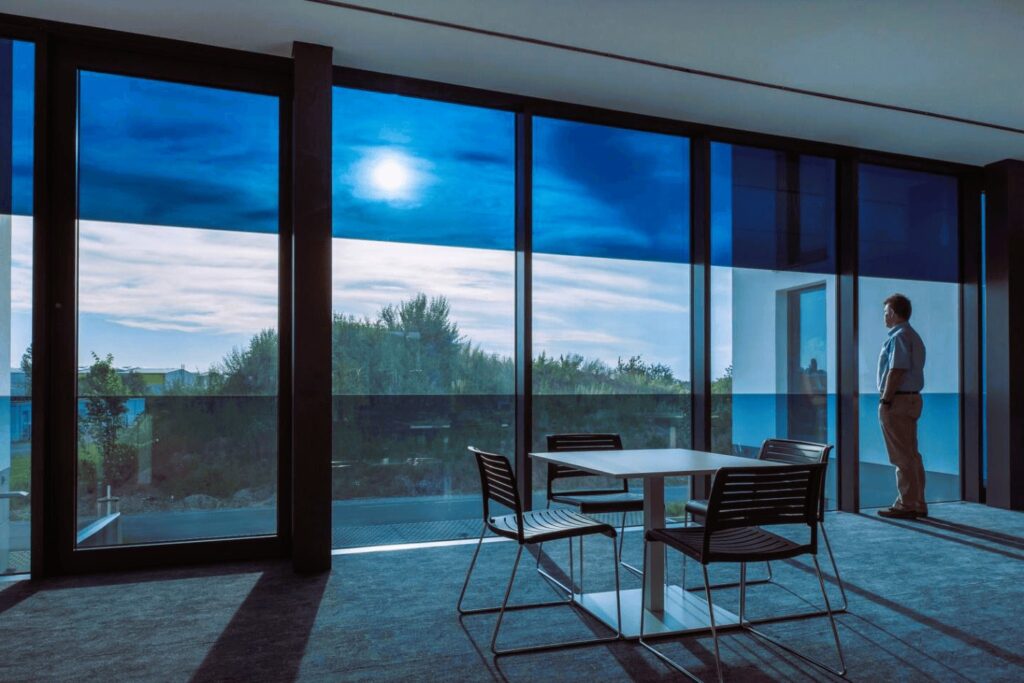Smart window technologies represent a cutting-edge approach to enhancing building performance, energy efficiency, and occupant comfort. Among these technologies, dynamic glazing and electrochromic windows stand out as innovative solutions that offer flexibility, control, and sustainability. In this article, we’ll explore the principles behind dynamic glazing and electrochromic windows, their applications, benefits, and implications for the future of building design.
Dynamic Glazing: An Overview
Dynamic glazing, also known as switchable or smart glass, refers to glass or glazing systems that can change their optical properties in response to external stimuli such as light, heat, or voltage. These windows offer the ability to control factors such as transparency, light transmission, and solar heat gain, providing occupants with increased comfort and energy savings.
How Dynamic Glazing Works

Dynamic glazing employs various technologies to achieve its functionality, including:
- Electrochromism: Electrochromic windows use a thin coating of electrochromic material, typically metal oxides such as tungsten oxide or nickel oxide, deposited onto the surface of the glass. When a small electric current is applied, ions within the coating migrate, causing the material to change color and opacity. By adjusting the voltage, users can control the degree of tinting and light transmission.
- Liquid Crystal Devices (LCDs): Liquid crystal windows consist of a layer of liquid crystal molecules sandwiched between two transparent conductive electrodes. Applying an electric field realigns the liquid crystal molecules, altering their optical properties and allowing the window to switch between transparent and opaque states.
- Suspended Particle Devices (SPDs): SPDs utilize a film or laminate containing suspended microscopic particles, typically suspended in a liquid or polymer matrix. When an electric current is applied, the particles align or disperse within the matrix, changing the window’s opacity and solar heat gain characteristics. Selecting environmentally friendly materials and processes, read more in the article about Sustainable Window Manufacturing Methods.
Applications and Benefits of Dynamic Glazing
Dynamic glazing offers a range of applications and benefits for commercial and residential buildings, including:
- Energy Efficiency: By dynamically adjusting to changing external conditions, such as sunlight and outdoor temperature, dynamic glazing helps reduce heating, cooling, and lighting loads, resulting in lower energy consumption and utility costs.
- Daylighting and Comfort: Dynamic glazing optimizes natural daylighting while minimizing glare and solar heat gain, creating a more comfortable and visually appealing indoor environment for occupants.
- Privacy and Security: Switchable glass technology allows for instant privacy on demand, making it ideal for conference rooms, bathrooms, and privacy partitions in commercial settings. Additionally, dynamic glazing can enhance security by providing an additional barrier against intrusion and UV radiation.
- Sustainability: By reducing energy usage and reliance on artificial lighting and heating, dynamic glazing contributes to overall building sustainability and environmental stewardship.
Electrochromic Windows: A Closer Look
Electrochromic windows are a specific type of dynamic glazing technology that relies on electrochromism to control light transmission and solar heat gain. These windows offer the following advantages:
- Real-time Control: Electrochromic windows allow users to adjust tint levels and transparency in real-time, providing precise control over daylighting and privacy.
- Energy Savings: By dynamically modulating solar heat gain and glare, electrochromic windows help reduce cooling loads and HVAC energy consumption, leading to lower operating costs and improved energy efficiency.
- Long-term Durability: Electrochromic coatings are durable and resistant to degradation, ensuring long-term performance and reliability over the lifespan of the windows.

Future Outlook and Considerations
As dynamic glazing and electrochromic windows continue to evolve, advancements in materials, manufacturing processes, and control systems are driving greater efficiency, functionality, and affordability. However, challenges such as cost, compatibility with existing building systems, and market adoption remain considerations for widespread implementation.
Standards and Regulations
To ensure the quality, performance, and safety of dynamic glazing and electrochromic windows, adherence to relevant standards and regulations is essential. Organizations such as the National Fenestration Rating Council (NFRC) in the United States and Natural Resources Canada (NRCan) provide guidelines and certification programs for energy-efficient window products and installations.
For more information on standards and regulations related to dynamic glazing and electrochromic windows, you can visit the following websites:
Dynamic glazing and electrochromic windows represent innovative solutions for enhancing building performance, energy efficiency, and occupant comfort. By harnessing the power of advanced materials and smart technologies, these windows offer dynamic control over daylighting, solar heat gain, and privacy, contributing to sustainable, comfortable, and visually appealing indoor environments. As the demand for energy-efficient building solutions grows, dynamic glazing and electrochromic windows are poised to play an increasingly significant role in shaping the future of architecture and building design.

